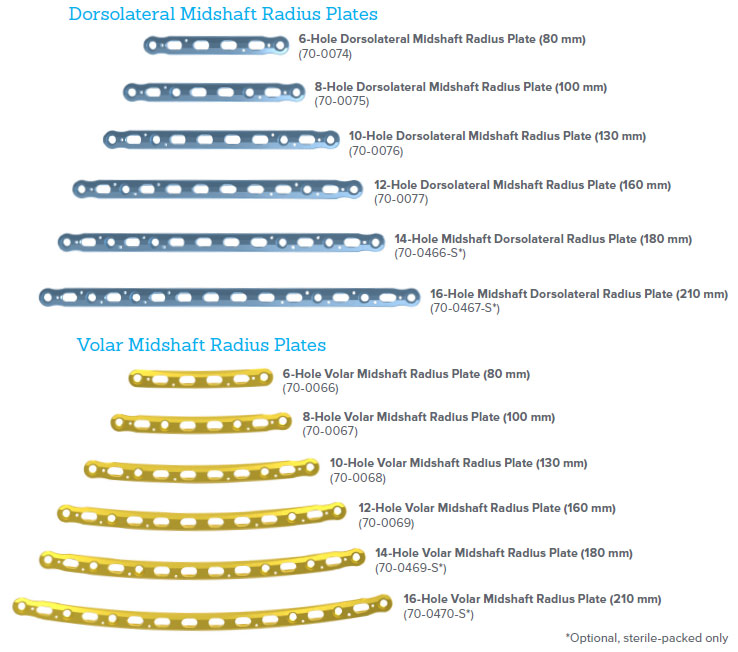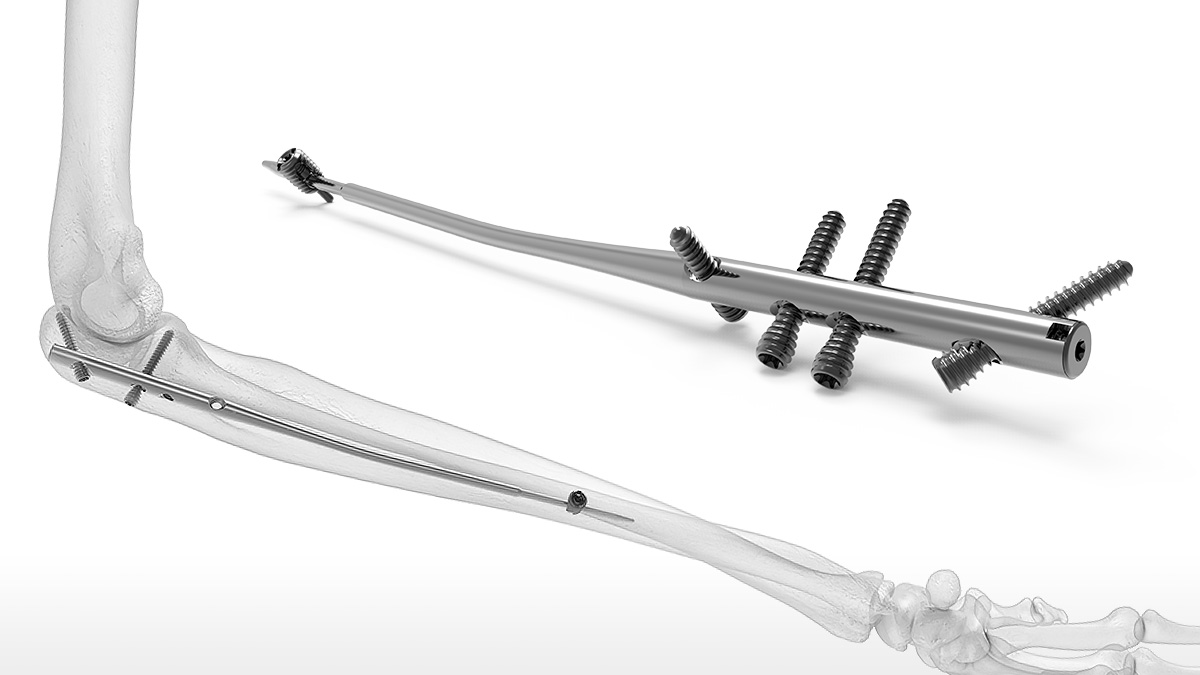Overview
Designed in conjunction with Roy Sanders, MD, the Acumed Ulna Nail 2 includes three nail diameters and seven length options, power reamers and carbon fiber radiolucent targeting guides to streamline the procedure, threaded holes within the nail, headless hexalobe screws to help minimize soft-tissue irritation, and the option to lock the nail distally providing additional fixation within the canal.
The Ulna Nail 2 must be used in conjunction with the Acumed Fibula and Forearm Nail (FFN) 2 Base Set, which contains universal instrumentation to implant the Ulna Nail 2, Fibula Nail 2, and screws.
Indications for Use
Related Documents
Ulna Nail 2 System Procedures
The Ulna Nail 2 System can be used in the following procedures:
Forearm Fracture Management (Distal Radius)Key Features
Minimally Invasive
The nail is designed to be inserted through a small incision with minimal canal reaming.
Rotation and Length Control
Tip-Loc technology provides the option to lock the nail distally, providing additional fixation within the canal.
Straightforward Technique
The radiolucent carbon fiber targeting guides aid in the correct placement of oblique screws targeting the olecranon and coronoid processes.
Precontoured Nails
Nails are precontoured to help accommodate the shape of the ulnar canal.
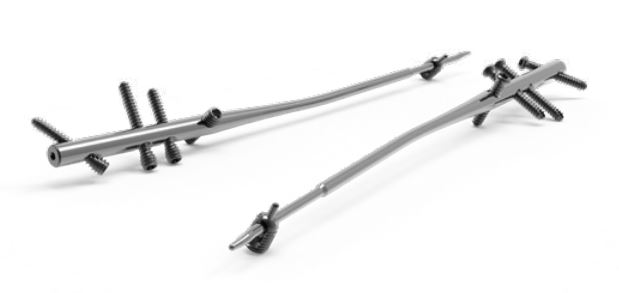
- Lee YH, Lee SK, Chung MS, Baek GH, Gong HS, Kim KH. Interlocking contoured intramedullary nail fixation for selected diaphyseal fractures of the forearm in adults. J Bone Joint Surg Am. 2008;90:1891–1898.
Upstream Product Manager, Daniel Cropper, highlights the key features of the Ulna Nail 2 System.
Comprehensive System
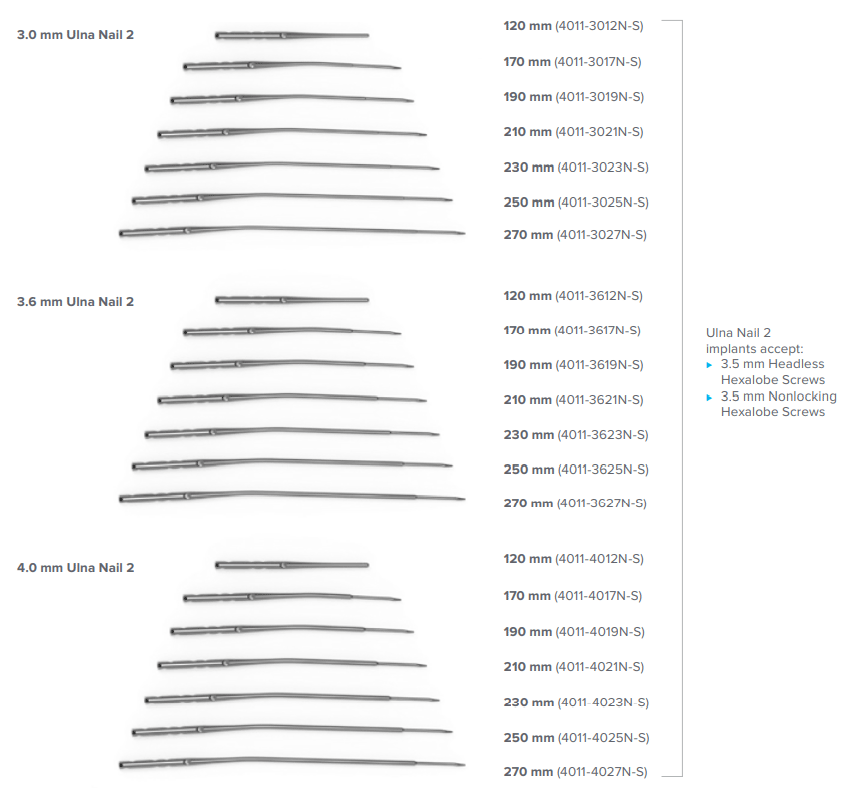
The Acumed Ulna Nail 2 is designed to address simple, transverse, and short oblique fractures as well as osteotomies of the ulna.
The Ulna Nail 2 includes:
- 21 nails offered in three diameters and seven lengths including a straight 120 mm nail to address proximal olecranon fractures
- Power reamers and carbon fiber radiolucent targeting guides to streamline the procedure
- Threaded holes within the nail
- Headless hexalobe screws aimed to minimize soft-tissue irritation
- Option to lock the nail distally, providing additional fixation within the canal
Screws
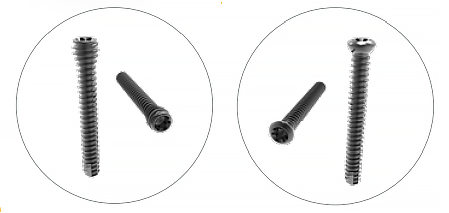
3.5 mm Nonlocking Hexalobe (8–65 mm) and 3.5 mm Headless Hexalobe (12–65 mm) Screws are both included in the system.
The 3.5 mm Headless Hexalobe screws lock into the threaded holes within the nail and are intended to create a low-profile construct to minimize soft -tissue irritation.
Optional Tip-Loc™ Bushing & Set Screw Kit
The Ulna Nail 2 offers the option to lock the nail distally, providing additional fixation within the canal.
The Tip-Loc Bushing and Tip-Loc Set Screw sit centrally within the last 1.5" of the nail. These sterile packed implants are offered in 1 mm increments ranging from 6 mm through 16 mm in length.
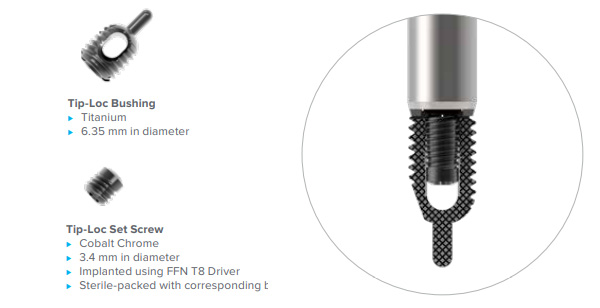
Optional End Caps
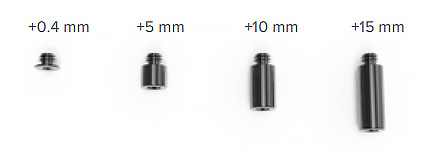
End caps assist in limiting ossification over the end of the nail, making the nail threads easier to engage if removal is desired.
End caps also allow surgeons to create an intermediate nail length while adjusting for anatomic variances and screw trajectories.
Radiolucent Carbon Fiber Targeting Guides
The radiolucent carbon fiber FFN Primary and Secondary Targeting Guides allow for unobstructed viewing of the nail and screw positioning under fluoroscopy to ensure correct placement.
Five guide wire holes have been included in the design of the FFN Primary Targeting Guide.
The center-most distal guide wire hole allows for precise viewing of the nail-to-FFN Base Plate junction under fluoroscopy, while the proximal four converging guide wire holes allow for initial fracture fixation when needed.
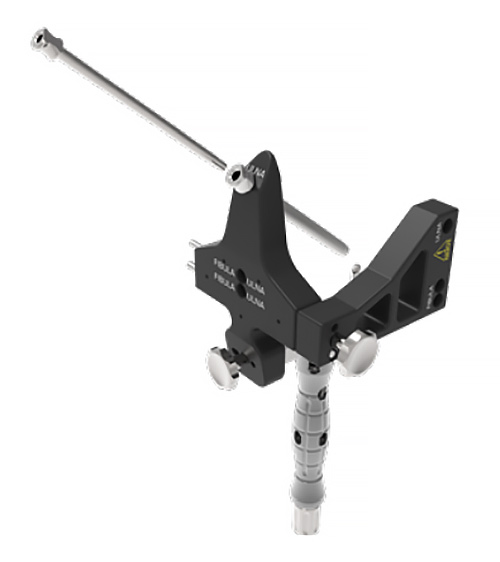
Removal Instruments
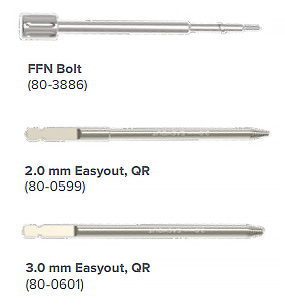
A variety of instruments to aid in both implant and screw removal are included in the system.
The FFN Bolt (80-3886), 2.0 mm Easyout, QR (80-0599), and 3.0 mm Easyout, QR (80-0601) provide multiple options to remove the screws or ulna nail if necessary.
Forearm Plating
Acumed offers dorsolateral and volar midshaft radius plates that can be used in conjunction with the Ulna Nail 2 for a less invasive approach to both-bone fractures of the diaphyseal region.
